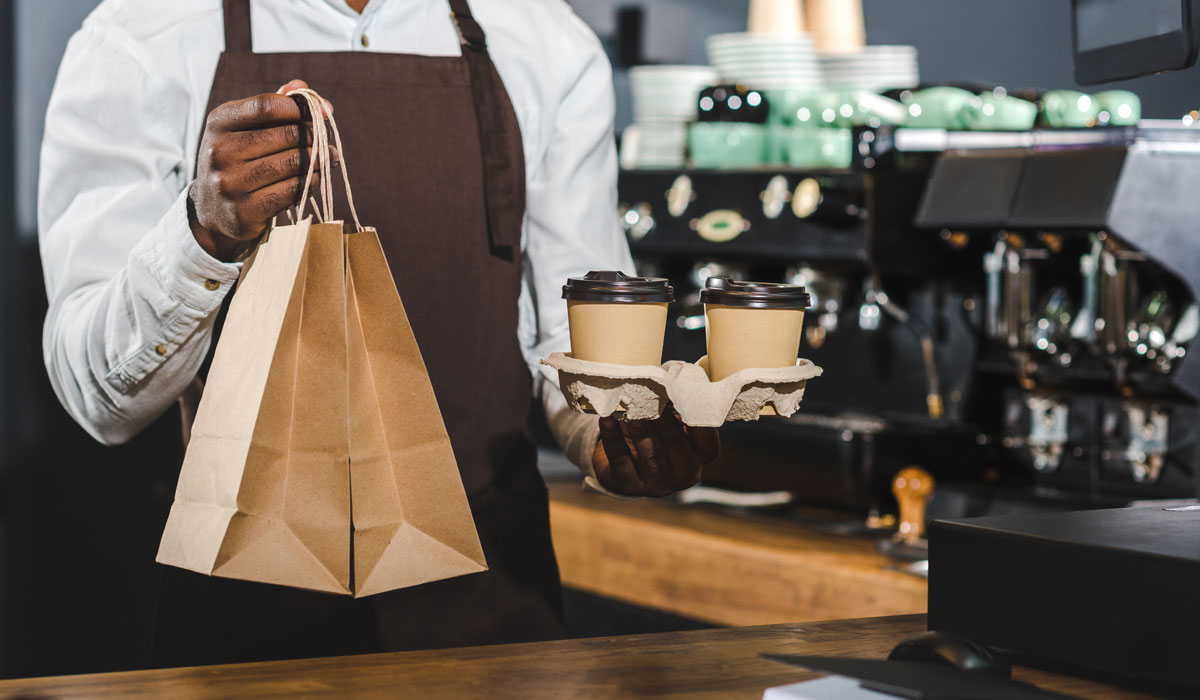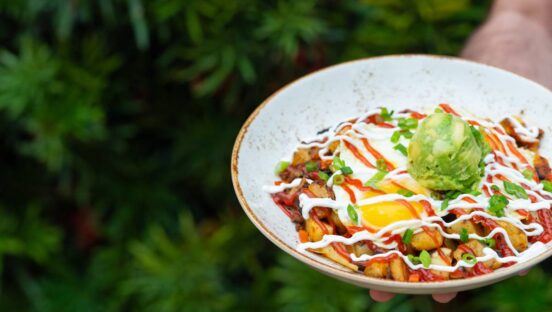










There are a set of potential developments hanging in the divide between 2020 and 2030 with the potential to shake up the restaurant industry. And while these disruptors are less certain than the iron-clad levers, like changes in workforce, tech, menu, and sustainability, if brought to fruition they could levy seismic shifts across the spectrum.
The National Restaurant Association recently partnered with a team of futurists from Foresight Alliance, a forward-focused consulting firm, to outline 10 prospective disruptors for the next decade—some of which are already growing legs in 2019.
Relying on an already-present, near-universal adoption of smartphones, integration of AI interactions between brand and customers, spread of physical objects embedded with tech, and growth of voice search, personalized diets, and consumer choices as an expression of values, intelligent restaurants would reimagine the brand-customer experience as one more heavily reliant on tech.
Intelligent units would feature up-to-the-minute, changing menuboards and prices, voice demand ordering through AI assistants, and increased consumer data for brands collected during the ordering process. These restaurants are more than an outlandish imagining; McDonald’s doubled down on AI twice in 2019 with the purchases of both AI personalization company Dynamic Yield and voice-based tech company Apprente, suggesting a sooner-rather-than-later arrival date for this model with a potential extension into drive thru as well.
In 2030, the NRA and BLS estimate that customers will spend around $1.2 trillion on the restaurant industry in total, up from $833 billion in 2018. With heightened demand and a smaller workforce, ghost or cloud kitchens—commercial kitchens without dine-in spaces that allow various brands to prep delivery orders without the interruption of a regular unit’s operations.
Some existing brands are already implementing ghost kitchens into their models, but other concepts exist only through cloud kitchens, and this is what futurists are calling out as a could-be disruptor for the next decade. New brands could pop up swiftly and simply with the one-fold construction of a single kitchen and all branding, marketing, and menus built through websites and social media. Furthermore, surprise pop-up versions of future online-only kitchens could generate new revenues for these virtual restaurants as well as provide digital natives with a special dining experience.
Third-party delivery is booming—online data portal Statista estimates that revenues from online food delivery total more than $107, 400 million in 2019, and expect an annual growth rate for online ordering of 9.9 percent from now through 2023.
Purchasing meals via app offers customers frictionless ordering and payment options, and the NRA and Foresight futurists recommend that brands look for creative ways to either partner with or compete with third-party channels in the next decade.
“Start-up independent restaurants could find opportunities in wholesaling to delivery apps,” the NRA report says. “An industry-financed delivery app could preserve restaurants’ direct brand relationships with customers.”
While full integration of driverless vehicles could take more than one decade, the rumblings of driverless robot delivery vehicles are already being heard in foodservice. Domino’s Pizza is testing out self-driving robot delivery vehicles in Houston this year, with the brand looking ahead to a full incorporation of the driverless tech in the near future, and Uber Eats tested food delivery via drone in San Diego this summer and also announced a partnership with Volvo that will power a self-driving SUV.
A full rollout of autonomous vehicles will also impact the way drivers eat—with more time on their hands for eating (quite literally) that used to be occupied with a steering wheel, consumers could increase their on-the-go food and beverage orders.
Obviously, there are still legal- and safety-centric wrinkles to be ironed out in within the realm of driverless cars, but the NRA suggests that brands that get involved in the movement early will be ahead of the game when driver-free vehicles eventually hit the roads.
ncreased online retail options, added low-friction buying options (like Amazon’s One-Click), and new expectations from 2030’s crop of digital native consumers are some of the ingredients that could bring about a new stake in the foodservice industry occupied by non-food companies.
It’s already possible to order groceries from Amazon, but the brand and others like it could add prepared meals to its offerings by 2030. The NRA report predicts the potential involvement of streaming services as well—these services could partner with delivery companies already in existence to offer all-encompassing, entertainment-and-dining subscriptions.
Restaurants could capitalize on this innovation, too, looking for new ways to partner with bigger companies pushing into the food space. “Restaurants could move beyond current loyalty or rewards programs and offer flat-rate monthly subscription plans to customers,” the report says.
In keeping with evolving front-of-house automation like order kiosks, the Foresight futurists see a possible largescale shift to automation and robots in back-of-house operations, too.
Some restaurants are already using robots for food prep in 2019, but, by 2030, technology could progress to a point where even motion-capture replication of the movements of chefs is on the table for machinery.
One variable in the totally-automated kitchens of the future? Human staff. Chefs and other kitchen employees will need to develop the skills and comfort level necessary to deal with automation and robots in the back of a unit, and with 2030’s expected smaller, older workforce, large groups of tech-savvy employees could be hard to come by.
Statista expects retail e-commerce sales worldwide to double between 2018 and 2023, with total sales surpassing $6.5 trillion in 2023. As online shopping skyrockets and, subsequently, shopping malls and brick-and-mortar stores close their doors, and as off-premises dining grows, consumers could be searching for different social spaces to connect with others or work remotely. Food halls and street-food-style markets could fill this need.
“Growth in takeout and food delivery will increase the importance of the face-to-face restaurant experience,” the NRA report projects. Furthermore, the format of food halls and markets caters to culinary diversity and exploration, an element that will become more important in future years as foodie culture becomes mainstream.
One of the most foreboding forecasts for the next 10 years in foodservice is also a circumstance that’s more difficult to control. As the global temperatures and weather become more volatile, and as the availability of water potentially shifts, too, growing patterns of staple and specialty crops could be disturbed, driving up food costs and possibly adding new taxes on energy used or carbon emitted during production methods and transportation.
While these unpredictable weather-related shifts could change the very fabric of the industry, one possible partial remedy could be the perfection of plant-based and lab-grown meats, as well as increased consumer enthusiasm for these alternatives.
An even more sophisticated technological iteration than back-of-house robotics, culinary AI has the potential to not only simplify operations and cut down on staff needed, but also to add a new wing of taste exploration to everyday restaurant operations.
The NRA predicts that specific AI’s could become as well-known as famed human chefs or bartenders, with restaurants able to leverage these AI assistants 24/7 availability and endless energy to offer up new, exploratory recipes in food and beverage.
In addition to creating entirely new categories of cuisine, these non-human chefs would have the ability to run at multiple locations simultaneously, allowing any number of restaurants with the necessary software capabilities to utilize their in-human amounts of kitchen knowledge.
The NRA’s final disruptor of note deals directly with the rising number of people 65 and older in the U.S. population; as Americans age, food could become a weapon against lifestyle diseases like obesity and diabetes. And with the foodservice industry already moving into healthier, fresher menu trends, functional food could be a more widespread way of dealing with ailments in 2030.
In some cases, meals may even be prescribed by doctors, featuring ingredients personalized for individual states of health, diets, and outcomes. “Prescription meals will be more precisely targetable with a growing understanding of how food can impact gut microbes or activate gene traits,” the NRA report reads.












